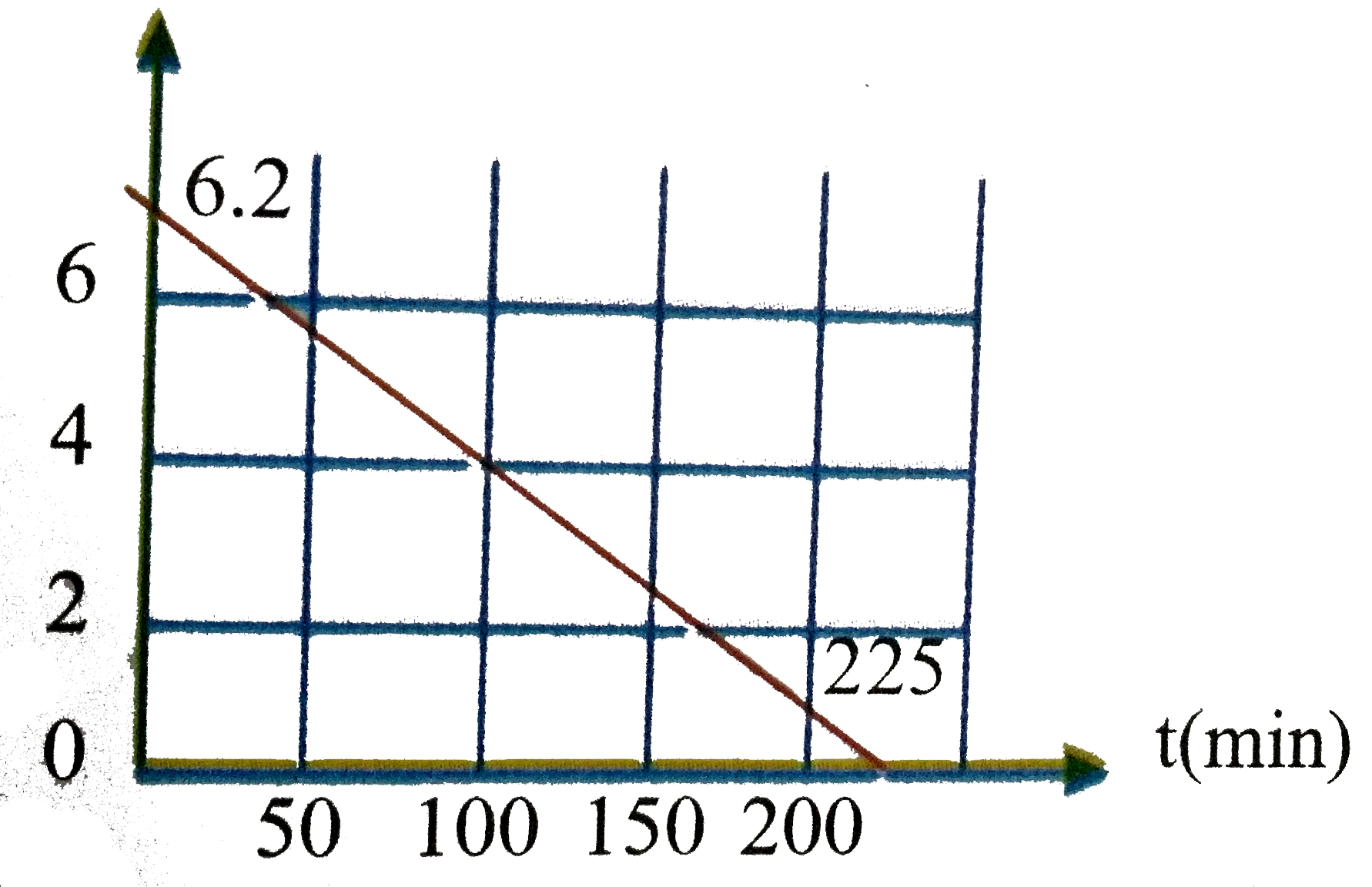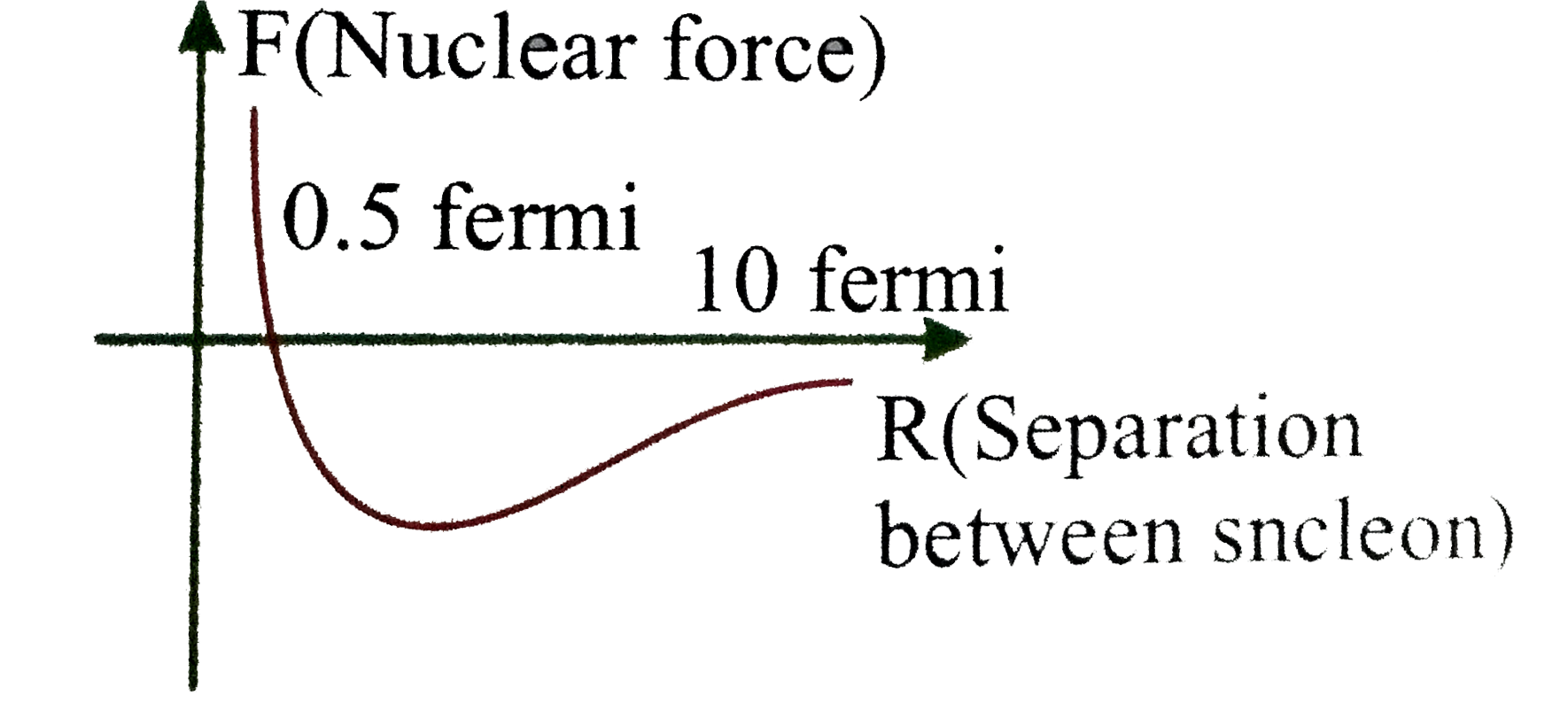The table that follows shows some measurementf of the decay rate of a sample of .128I, a radio nuclide often used medically as a tracer to measure the rate at which iodine is absorbed by the thyroid gland.
∣∣
∣
∣
∣
∣
∣∣Time(min)A(counts/s)Time(min)A(counts)/s4392.213210.936161.41644.566865.51961.861026.82181.00∣∣
∣
∣
∣
∣
∣∣

The half life t1/2 for this radio nuclide.
25min
50min
2.5min
5min
The correct Answer is:A
A=A0e−λt⇒lnA=lnA0−λt
∴λ=lnA0−lnAt=6.2−0225=0.0275−1min
∴T1/2=0.693λ=25min
Topper's Solved these Questions
- BOOK - NARAYNACHAPTER - NUCLEAR PHYSICSEXERCISE - Level-V questions(Single answer type questions)12videos
NUCLEAR PHYSICS
- BOOK - NARAYNACHAPTER - NUCLEAR PHYSICSEXERCISE - Level-V Multiple answer questions45videos
NUCLEAR PHYSICS
- BOOK - NARAYNACHAPTER - NUCLEAR PHYSICSEXERCISE - Level-II (C.W)14videos
NUCLEAR PHYSICS
- BOOK - NARAYNACHAPTER - MOVING CHARGES AND MAGNETISMEXERCISE - EXERCISE - 420videos
MOVING CHARGES AND MAGNETISM
- BOOK - NARAYNACHAPTER - NUCLEI EXERCISE - ASSERTION & REASON5videos
NUCLEI
Similar Questions
The dependence of nuclear force on distance between nucleons is not known precisely, but approximate variation is shown graphically. From graph which of following statement cannot be concluded ?
 03:31View Solution
03:31View SolutionRegarding the nuclear forces, choose the correct options.
01:26View SolutionA nucleus X235 splits into two nuclei having the mass numbers in the ratio 2:1. The ratio of the radii of those two nuclei is
05:31View SolutionA particle of charge +q and mass m moving under the influnce of a uniform electric field Eˆiand a uniform magnetic field Bˆk follows trajectory from P to Q as shown in figure. The velocities at P and Q vˆi and −2vˆj respectively. Which of the following statement(s) is/are correct
 01:32View Solution
01:32View Solution(A): Free Neutron decays into proton, electron, and antinuetrino
(R ): Neutron is unstable outide the nucleus00:56View SolutionThe rate of radioactive decay of a sample are 3×108dps and 3×107dps after time 20min and 43.03min respectively. The fraction of radio atom decaying per second is equal to
02:02View SolutionA certain nuclide has a half life period of 30 min. If a sample containing 600 atoms is allowed to decay for 90 min, how many atoms will remains?
02:55View SolutionA radio nuclide A_(1) with decay constant lambda_(1) transforms into a radio nuclide A_2 with decay constant lambda_(2) . Assuming that at the initial moment, the preparation contained only the radio nuclide A_(1) (a) Find the equation decribing accumulation of radio nuclide A_(2) with time. (b) Find the time interval after which the activity of radio nuclide A_(2) reaches its maximum value.
View SolutionThe count rate of a Geiger Muller counter for the radiation of a radioactive material of half-life 30 min decreases to 5s−1 after 2h. The initial count rate was
02:09View SolutionThe half life of a radio nuclide is 77 days then its decay constant is
View SolutionDerive an expression for the half-life of a radio active nuclide.
02:09View SolutionThe half life of 2g sample of radioactive nuclide 'X' is 15 min. The half life time of 1g sample of X is
02:02View SolutionA count rate meter is used to measure the activity of a given sample. At one instant meter shows 2400 counts/min. One hour later the count drops to 300 counts per minute. What is half life of the sample ?
04:56View SolutionWrite the expression for the half life of a radioactive element.
02:37View SolutionA radio nuclide A_(1) with decay constant lamda_(1) transform into radio nuclide A_(2) with decay constant lamda_(2) . Assuming that at the initial moment the preparation contained only radio nuclide A_(1) , then the time interval after which the activity of radio nuclide A_(2) reaches its maximum value is
03:15View Solution

